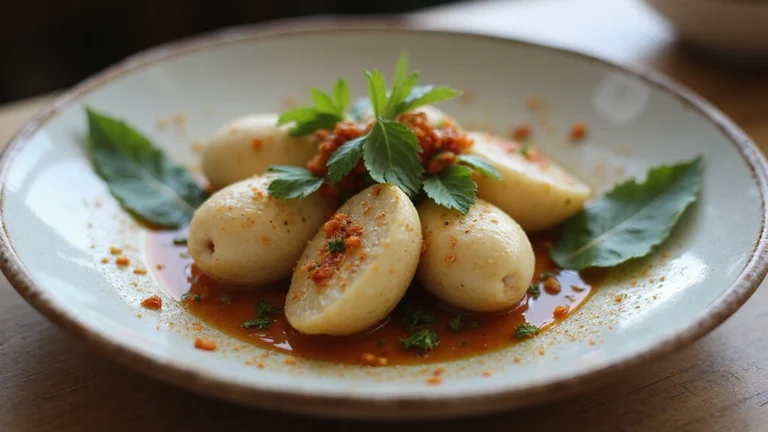
Ever wondered what makes Shanghai vegetable such a beloved dish throughout China? This classic stir-fry combines tender greens with savory aromatics for a flavor that’ll transport you straight to the streets of Shanghai.
Shanghai vegetables, also known as bok choy or pak choi, are the star of authentic Chinese cuisine. These vibrant greens feature crisp white stems and dark leafy tops that cook to perfection in minutes. When stir-fried with garlic, ginger and a touch of soy sauce, they transform into a simple yet incredibly flavorful side dish that pairs beautifully with any Asian-inspired meal.
You’ll love how this recipe balances healthful eating with rich umami flavors. The natural sweetness of Shanghai greens shines through while maintaining their satisfying crunch. It’s a quick weeknight addition that brings restaurant-quality Chinese cooking right to your dinner table.
What Is Shanghai Vegetable?
Shanghai vegetable typically refers to Shanghai bok choy (上海青), a variety of Chinese cabbage that’s smaller and more tender than regular bok choy. This leafy green features smooth rounded leaves with pale green stems arranged in a compact rosette shape.
Unlike its larger cousin, Shanghai bok choy has a more delicate texture and milder flavor with subtle peppery notes. The entire vegetable is edible, from its crisp stems to its tender leaves, making it perfect for quick-cooking methods like stir-frying.
Native to the Yangtze River Delta region around Shanghai, this vegetable has become increasingly popular worldwide for its versatility and nutritional benefits. Shanghai bok choy is packed with vitamins A and C, calcium, and fiber while remaining low in calories.
You’ll often find Shanghai bok choy featured in classic Chinese stir-fries, soups, and noodle dishes. Its ability to absorb the flavors of garlic, ginger, and soy sauce while maintaining its pleasant crunch makes it a favorite ingredient in Shanghainese and Cantonese cuisine.
In markets, look for Shanghai bok choy with bright green leaves free from wilting or yellowing. The stems should appear firm and crisp with no signs of browning. Many Asian grocery stores carry this vegetable year-round, though it’s becoming increasingly common in mainstream supermarkets as well.
Why You’ll Love This Shanghai Vegetable Recipe
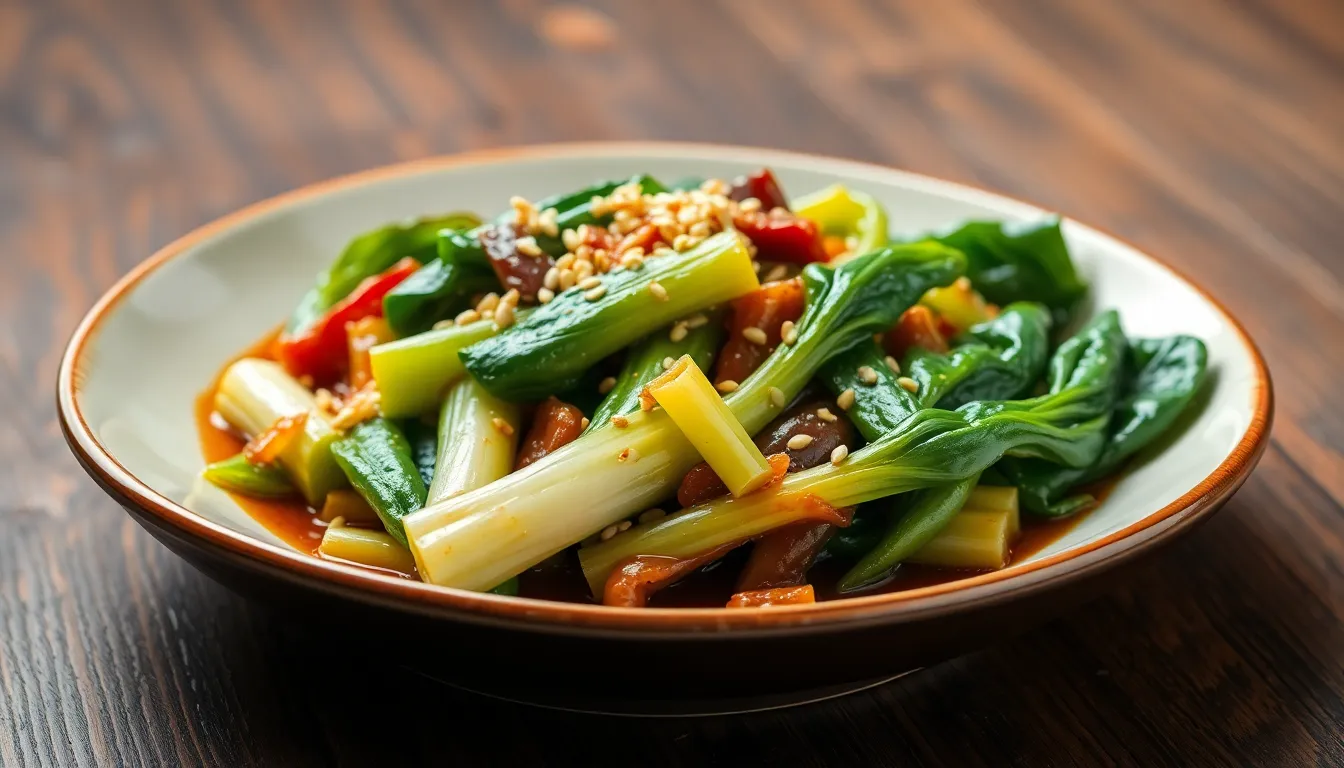
This Shanghai bok choy stir-fry will become your new weeknight favorite for several compelling reasons. The delicate texture creates a satisfying contrast between the tender leaves and crisp stalks with a mild sweetness that makes it approachable even for picky eaters.
Your taste buds will appreciate how the natural flavors of Shanghai bok choy shine when paired with aromatic garlic and rich umami sauces. The complex flavor profile develops from the perfect balance of Shaoxing wine oyster sauce soy sauce toasted sesame oil and white pepper that enhances the vegetable’s inherent qualities without overwhelming them.
Nutritional benefits abound in this dish as Shanghai bok choy delivers a wealth of vitamins and minerals while keeping calories low making it an excellent addition to your healthy meal rotation. Your busy schedule will thank you for choosing this 10-minute stir-fry that doesn’t sacrifice taste for convenience.
Versatility stands out as another fantastic quality of this recipe. You can enjoy it as a simple side dish with just garlic and soy sauce or transform it into a heartier meal by adding shiitake mushrooms or ground pork. The adaptable nature of Shanghai bok choy allows it to complement virtually any Asian-inspired main course.
Home cooks particularly appreciate how this vegetable absorbs sauces beautifully while maintaining its pleasant crunch creating a restaurant-quality dish with minimal effort. The balance of textures and flavors makes this Shanghai vegetable recipe addictive even to those typically hesitant to embrace new vegetables.
Key Ingredients For Shanghai Vegetable
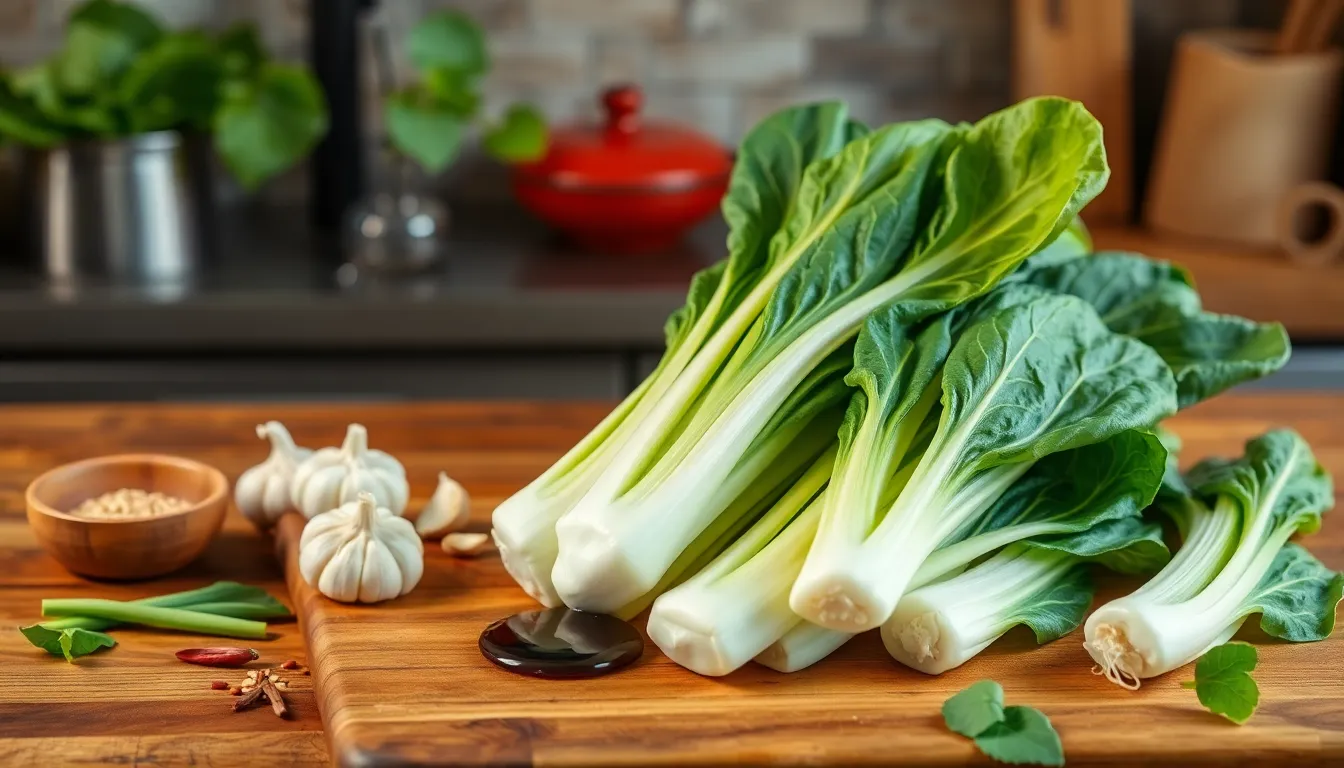
Creating authentic Shanghai vegetables requires just a handful of quality ingredients centered around the star of the dish – Shanghai bok choy. This simple yet flavorful dish highlights the natural sweetness of tender greens enhanced by aromatic seasonings.
Shanghai Bok Choy
Shanghai bok choy forms the foundation of this classic dish with its tender leaves and mild sweet flavor. You’ll want to thoroughly clean your bok choy by soaking it in water to remove any dirt or sand trapped between the leaves. Trim the base if needed but keep the stems attached as they provide a satisfying crunch that contrasts beautifully with the delicate leaves. The compact rosette shape of Shanghai bok choy makes it perfect for quick cooking methods like stir-frying which preserves its natural sweetness while maintaining some texture. For best results select specimens with bright green leaves and firm white stems at your local Asian market or increasingly at mainstream supermarkets.
Aromatics And Seasonings
The flavor profile of Shanghai vegetables comes from a carefully balanced blend of aromatic ingredients and seasonings. Fresh minced garlic serves as the aromatic base sautéed in a neutral cooking oil like vegetable or corn oil until fragrant. Your sauce should combine soy sauce for saltiness and umami with oyster sauce for richness and depth (vegetarian oyster sauce works well for plant-based diets). A splash of Shaoxing wine adds complexity while toasted sesame oil brings a nutty finish to the dish. Season with a pinch of sugar ground white pepper and salt to taste. For that restaurant-quality glossy finish add a simple cornstarch slurry mixed with vegetable or chicken stock at the end of cooking. These seasonings work together to enhance rather than overpower the natural sweetness of the bok choy creating a light yet satisfying vegetable dish characteristic of Shanghai cuisine.
Tools And Equipment Needed
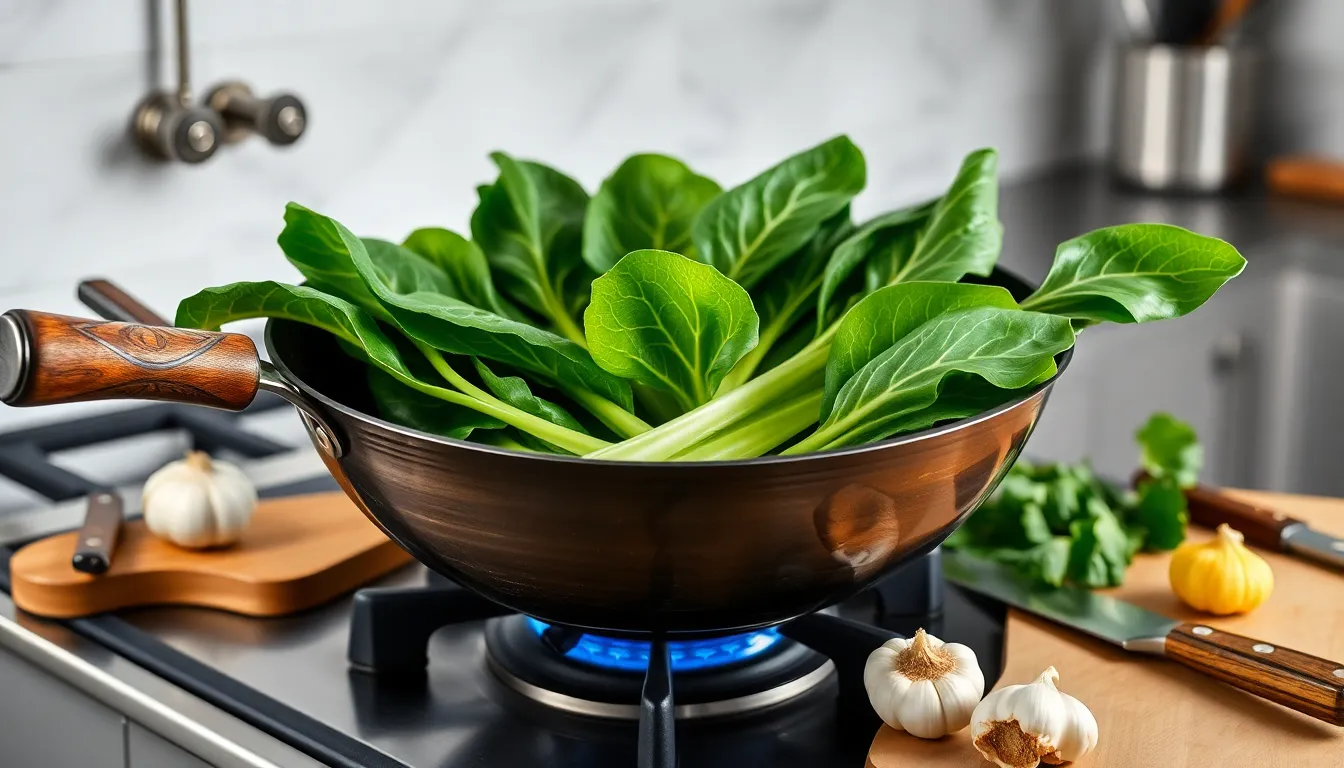
Preparing Shanghai vegetables requires minimal but exact kitchen equipment to achieve that restaurant-quality stir-fry. Your cooking process will be streamlined with these essential tools:
- Wok or large skillet – A 12-14 inch carbon steel wok provides ideal heat distribution for quick stir-frying Shanghai bok choy while maintaining its crunch
- Wok spatula or wooden spoon – For tossing vegetables quickly without damaging their delicate leaves
- Sharp chef’s knife – Essential for trimming the base of bok choy and slicing aromatics
- Cutting board – Preferably with a groove to catch vegetable juices
- Colander – For thoroughly washing and draining Shanghai bok choy
- Small mixing bowls – To prepare sauce ingredients and cornstarch slurry in advance
- Measuring spoons – For precise seasoning with soy sauce oyster sauce and other condiments
Modern vegetable processing facilities in Shanghai use advanced equipment for large-scale production including automated seeding lines and specialized slicing machines. While these commercial systems can process millions of vegetable seedlings annually with minimal labor Shanghai bok choy at home requires only basic kitchen tools.
For the busy home cook a food processor with slicing attachments can speed up preparation of aromatics like garlic and ginger. A splatter screen might also prove useful when stir-frying at high temperatures to protect your stovetop.
The most important factor is having all your tools and ingredients prepped and ready before heating your wok as this stir-fry comes together in just minutes. Once you gather these basic tools you’ll be well-equipped to create authentic Shanghai vegetables with restaurant-quality results.
Ingredients
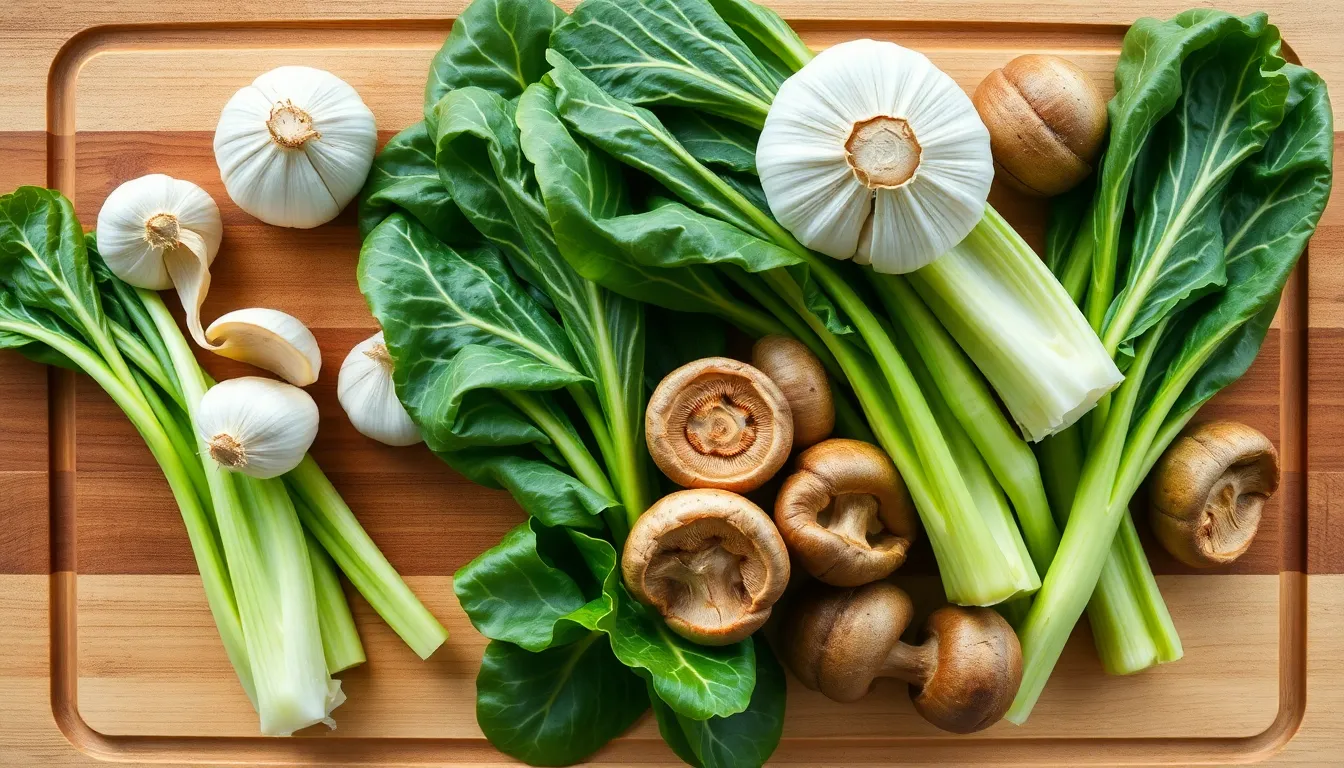
For the classic Shanghai Vegetable stir-fry, you’ll need these fresh ingredients that balance savory depth with the natural sweetness of Shanghai bok choy:
For the Vegetables and Aromatics:
- 1 pound Shanghai bok choy (baby bok choy works as substitute)
- 2 cloves garlic, minced
- 1 tablespoon neutral cooking oil (vegetable or canola)
- Optional: 4-6 dried shiitake mushrooms, rehydrated and sliced
For the Sauce:
- 1 tablespoon soy sauce
- 1 tablespoon oyster sauce
- 1 teaspoon Shaoxing rice wine
- 1/2 teaspoon toasted sesame oil
- 1/4 teaspoon sugar
- 1/8 teaspoon white pepper
- Salt to taste
Optional Sauce Additions:
- 2 tablespoons chicken or vegetable stock
- 1/2 teaspoon cornstarch (mixed with 1 teaspoon water for thickening)
The star ingredient, Shanghai bok choy, features tender leaves and crisp pale green stems arranged in a compact rosette shape. This variety differs from regular bok choy with its more delicate texture and milder flavor profile. When shopping, look for specimens with bright green leaves and firm stems without wilting or yellowing.
Traditional Shanghai cooking techniques enhance the vegetables’ natural qualities through a careful balance of aromatics and seasonings. Garlic provides essential pungency while the sauce ingredients create the signature umami depth found in authentic Chinese cuisine. The optional cornstarch slurry delivers that restaurant-style glossy finish that coats each piece perfectly.
How To Prepare Shanghai Vegetable
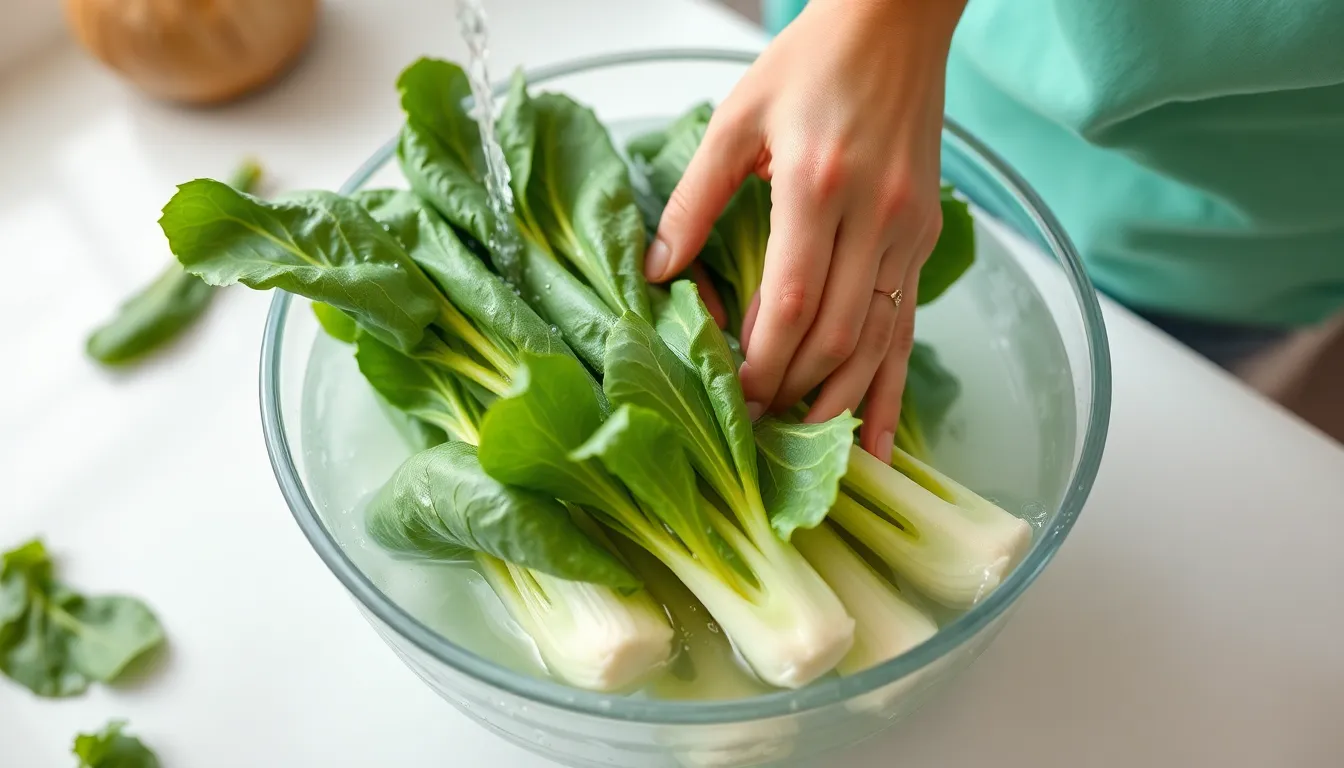
Proper preparation is essential for bringing out the delicate flavor and crisp texture of Shanghai bok choy. The following steps will ensure your vegetables are perfectly clean and ready for stir-frying or braising.
Cleaning The Vegetables
Start by examining your Shanghai bok choy and trimming away any dry or discolored base portions. Place the vegetables in a large bowl of cool water and agitate them gently with your hands to dislodge hidden dirt and sand. You should lift the bok choy out of the water rather than draining it, as this leaves the grit behind in the bowl. Repeat this soaking and stirring process until the water remains clear, indicating all soil has been removed from between the leaves and stems. For particularly sandy vegetables, you might need to change the water several times to ensure thorough cleaning. Proper cleaning prevents any unpleasant grittiness in your final dish and preserves the natural sweetness of the Shanghai vegetable.
Chopping And Prepping
After thoroughly cleaning your Shanghai bok choy, shake off excess water or pat dry with paper towels. Depending on the size of your vegetables and your recipe requirements, cut the bok choy into halves or quarters lengthwise to create manageable pieces that cook evenly. For larger specimens, you may prefer to separate the leaves from the stems, as stems require slightly longer cooking time. Trim and discard any remaining tough or woody portions at the base while preserving the tender white stems that provide the characteristic crunch. When preparing complementary ingredients like shiitake mushrooms, remove the tough stems completely before slicing the caps. Shanghai vegetables cook quickly, so having all ingredients prepped before heating your wok ensures the best texture and color retention. Your prepared Shanghai bok choy is now ready for various cooking methods, from quick stir-fries that preserve its crispness to longer braising techniques that infuse it with rich flavors.
Cooking Instructions

Master the art of cooking Shanghai bok choy with these two traditional Chinese methods that preserve its natural sweetness and crisp texture. Each technique highlights different qualities of this versatile vegetable while maintaining its nutritional benefits.
Stir-Frying Method
- Heat a large wok or skillet over medium-high heat until it begins to smoke slightly.
- Add 2 tablespoons of neutral cooking oil and 1 teaspoon of sesame oil to the hot pan.
- Quickly add 2-3 cloves of minced garlic and stir for 15-20 seconds until fragrant but not browned.
- Add your cleaned and trimmed Shanghai bok choy to the wok, tossing to coat with the aromatic oil.
- Pour in 2-3 tablespoons of chicken stock or water around the edges of the wok.
- Season with a pinch of salt and toss the vegetables to distribute the seasonings.
- Cover the wok and let the vegetables steam for about 3 minutes.
- Remove the lid and check for doneness – the stems should be tender-crisp and the leaves wilted.
- If using a sauce mixture (1 tablespoon soy sauce, 1 tablespoon oyster sauce, 1 teaspoon Shaoxing wine, ½ teaspoon sugar, ½ teaspoon sesame oil, and a pinch of white pepper), add it now.
- Toss everything together for another 30 seconds until the sauce coats the vegetables evenly.
- Transfer immediately to a serving platter and arrange attractively with the stems pointing in the same direction for a restaurant-style presentation.
Steaming Method
- Thoroughly wash your Shanghai bok choy and arrange them in a single layer in a heatproof dish or steaming basket.
- Bring water to a boil in a wok or pot that can accommodate your steamer.
- Place the steaming basket or dish with vegetables over the boiling water, ensuring water doesn’t touch the vegetables.
- Cover with a tight-fitting lid and steam for 3-5 minutes depending on the size of your bok choy.
- Test for doneness by piercing the thickest part of a stem with a knife – it should enter easily while maintaining some resistance.
- While the vegetables steam, prepare a simple sauce by combining 1 tablespoon soy sauce, 1 teaspoon sesame oil, and optionally ½ teaspoon Shaoxing wine or oyster sauce.
- Once the bok choy is cooked, carefully remove it from the steamer to prevent overcooking.
- Transfer to a serving dish, arranging the vegetables neatly.
- Drizzle the prepared sauce evenly over the steamed bok choy just before serving.
- Garnish with a sprinkle of toasted sesame seeds if desired for added texture and visual appeal.
Serving Suggestions
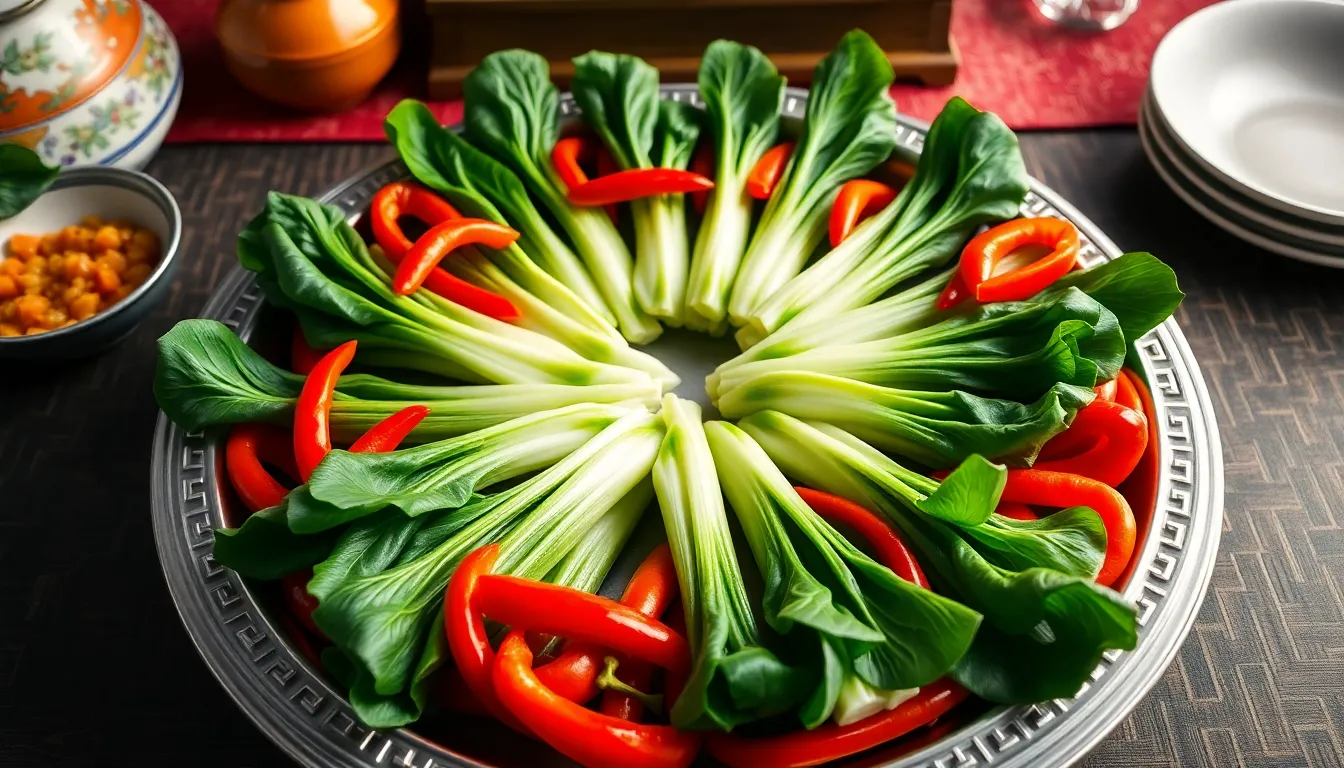
Shanghai bok choy pairs exceptionally well with a variety of Asian dishes making it a versatile addition to your meal planning. Serve this vibrant green vegetable alongside fried rice or noodle dishes where its mild flavor complements the savory components without overwhelming them. Plain steamed rice also makes an excellent base allowing the vegetable’s natural flavors and sauce to shine.
Create a complete meal by incorporating Shanghai bok choy into vegetable rice dishes with ground pork. This combination results in a comforting one-dish meal that balances protein and vegetables perfectly. The tender leaves and crisp stems add textural contrast to the soft rice and savory meat.
For an umami-rich pairing consider serving Shanghai bok choy with shiitake mushrooms. These earthy fungi enhance the mild sweetness of the greens while adding depth to the overall flavor profile. The glossy sauce from your stir-fried Shanghai vegetables works beautifully when spooned over these complementary ingredients.
Transform your Shanghai bok choy into an impressive side dish for special occasions by arranging the steamed halves in a circular pattern on a serving platter. This presentation method highlights the vegetable’s natural beauty and makes it suitable for family-style Chinese banquets alongside braised pork belly or whole steamed fish.
Use leftover stir-fried Shanghai vegetables as a filling for spring rolls or dumplings the next day. The pre-cooked vegetable mixture adds moisture and flavor to these handheld treats while extending your meal preparation efforts across multiple dishes.
Balance your serving plate with color by adding red bell peppers or carrots to your Shanghai bok choy preparation. This not only enhances visual appeal but also introduces complementary flavors and additional nutrients to your meal.
Storage And Make-Ahead Tips
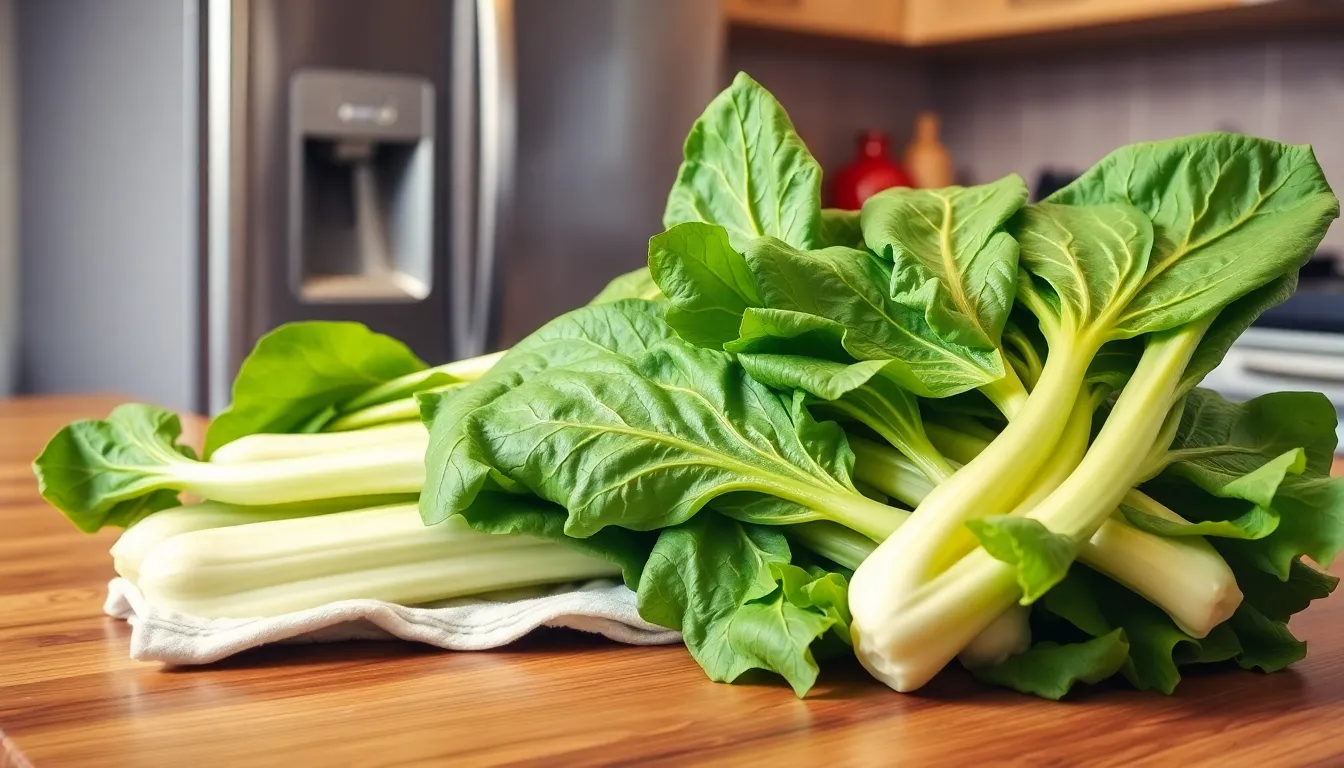
Proper storage of Shanghai bok choy is essential for maintaining its crisp texture and nutritional benefits. Follow these expert tips to keep your greens fresh and ready for your next stir-fry:
Refrigerating Fresh Shanghai Bok Choy
Before storing your Shanghai vegetables, remove any wilted or damaged outer leaves to prevent them from accelerating spoilage. Wrap unwashed bok choy in a clean damp tea towel before placing it in your refrigerator’s crisper drawer. This moisture-retention technique extends shelf life by at least 3 days depending on initial freshness.
Avoid storing Shanghai bok choy in airtight plastic containers or bags without ventilation. The vegetables need to breathe, so use mesh bags or poke holes in plastic bags to prevent moisture buildup that leads to rapid deterioration.
Keep your greens at ideal conditions of 45-50°F (7-10°C) with approximately 95% humidity for maximum freshness. Handle the vegetables gently during storage to minimize bruising or cuts that can accelerate decay.
Make-Ahead Preparation
For meal prep convenience, store Shanghai bok choy whole and uncut until you’re ready to use it. Cutting increases surface exposure to air and microbes, significantly reducing storage time.
When preparing ahead for stir-fries, you can clean and trim the vegetables up to 24 hours before cooking. After preparation, refresh the dampness of your storage towel if it begins to dry out to maintain optimal crispness.
If you notice your Shanghai vegetables beginning to soften, try this professional revitalization technique: place them in a bowl of ice water in the refrigerator for several hours to restore their signature crunch.
Remember not to wash your Shanghai bok choy until just before use. Premature washing introduces excess moisture that encourages bacterial growth and speeds spoilage, compromising both texture and flavor in your final dish.
Variations Of Shanghai Vegetable
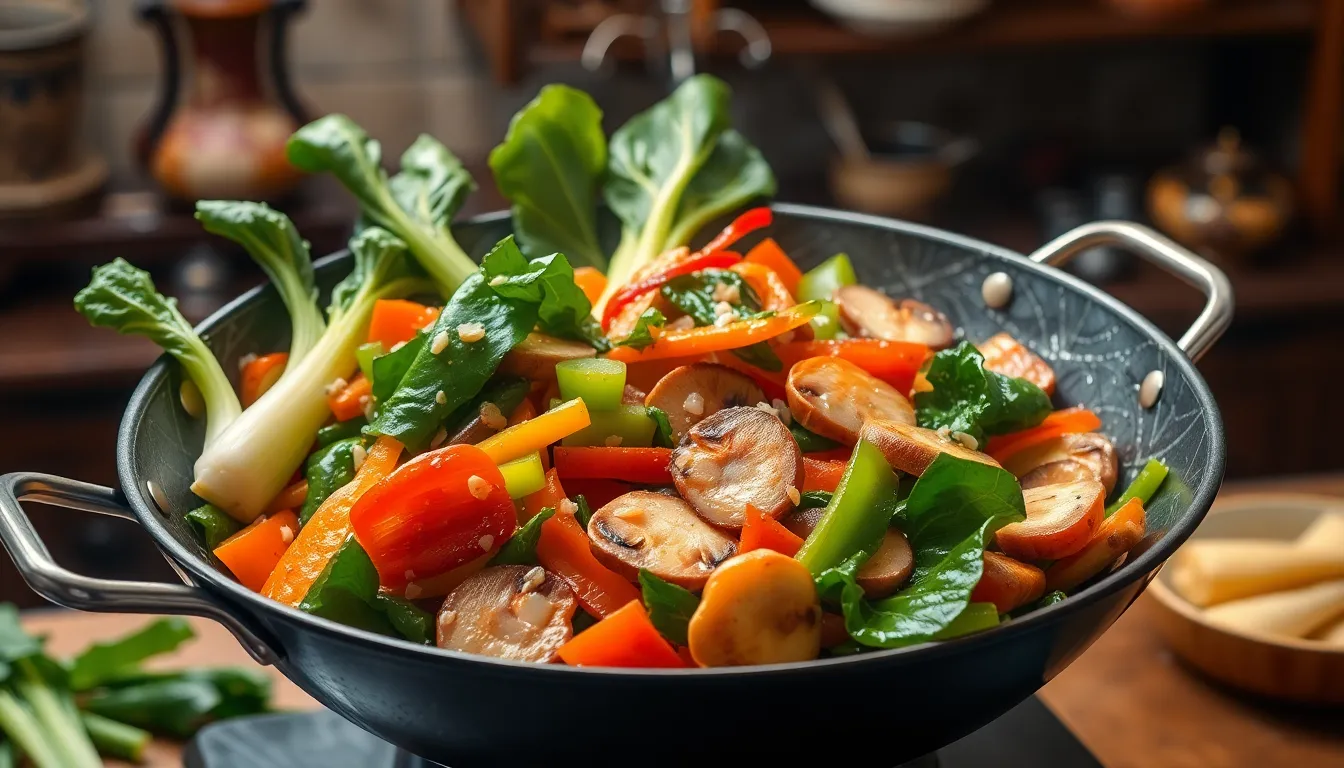
Shanghai vegetable dishes offer incredible versatility beyond the classic bok choy preparation. These variations maintain the essence of Shanghai cuisine while introducing new flavors and textures to suit different palates and dietary preferences.
Basic Shanghai Vegetable Stir-Fry
The traditional Shanghai vegetable stir-fry combines a colorful medley of fresh vegetables including carrots, celery, snow peas, shiitake mushrooms, and bell peppers. These vegetables are quickly stir-fried with minced garlic and ginger in a hot wok to preserve their natural crispness and vibrant colors. The signature sauce features a balanced blend of Shaoxing wine, oyster sauce, and sesame oil with a hint of white pepper for depth. Cook the vegetables just until tender-crisp—about 3-4 minutes—to maintain their natural sweetness and nutritional value. Many Shanghai homes serve this simple yet flavorful dish as an everyday side that showcases the region’s emphasis on fresh, seasonal produce.
Vegetable Lumpiang Shanghai
A delightful Filipino adaptation of Shanghai-style vegetables comes in the form of Lumpiang Shanghai. These crispy spring rolls feature finely chopped or grated vegetables wrapped in thin spring roll wrappers and fried to golden perfection. To prepare them:
- 2 cups cabbage, finely shredded
- 1 cup carrots, julienned or grated
- ½ cup green beans, finely chopped
- ½ cup onions, minced
- 3 cloves garlic, minced
- 2 tablespoons soy sauce
- 1 teaspoon salt
- ½ teaspoon white pepper
- 20-25 spring roll wrappers
- Vegetable oil for frying
Mix the vegetables with seasonings until well combined. Place about 2 tablespoons of filling on each wrapper, roll tightly, and seal the edges with water. Deep fry until golden brown and serve with sweet chili sauce for dipping. This variation offers a crunchy, handheld alternative to the traditional stir-fry while maintaining the fresh vegetable profile characteristic of Shanghai cuisine.
Spicy Shanghai Vegetable
Traditional Shanghai cuisine tends to be mild, but spicy variations have gained popularity for those who enjoy heat. You can transform any Shanghai vegetable dish into a spicy delight by incorporating hot peppers or spicy bean paste. For a spicy Shanghai bok choy stir-fry, add 2-3 thinly sliced fresh red or green chili peppers along with the garlic during the initial cooking stage. The heat from the peppers infuses the oil, creating a pleasant warmth that complements the natural sweetness of the vegetables.
For a more complex spicy profile, incorporate 1-2 tablespoons of doubanjiang (spicy bean paste) when creating your sauce. This fermented paste adds both heat and umami depth that transforms the dish entirely. The spicy elements balance particularly well with Shanghai bok choy’s slightly sweet profile, creating a harmonious contrast that many find irresistible. Remember to adjust the amount of chili according to your heat preference—the goal is to enhance, not overwhelm, the delicate vegetable flavors.
Shanghai Vegetable With Protein
Adding protein transforms Shanghai vegetable dishes from simple sides into satisfying main courses. Traditional protein additions include:
| Protein Option | Preparation Method | Cooking Time | Best Paired With |
|---|---|---|---|
| Ground pork | Marinated with soy sauce, rice wine, and cornstarch | 3-4 minutes before adding vegetables | Shanghai bok choy, carrots, mushrooms |
| Tofu | Firm tofu, cubed and pan-seared | 2-3 minutes per side before stir-frying with vegetables | Snow peas, bell peppers, mushrooms |
| Thinly sliced beef | Marinated with oyster sauce and baking soda for tenderness | 1-2 minutes at high heat | Celery, carrots, onions |
| Plant-based alternatives | Crumbled tempeh or seitan seasoned with five-spice | According to package directions | Mixed Shanghai vegetables |
To incorporate protein into your Shanghai vegetable stir-fry, first cook the protein until nearly done, then add the vegetables and continue cooking until everything is properly cooked. The sauce ingredients remain similar to the basic recipe, though you might increase quantities slightly to accommodate the additional ingredients. This protein-vegetable combination creates a balanced one-dish meal that features the best elements of Shanghai cuisine—fresh vegetables with their natural flavors enhanced by thoughtful seasoning and complementary textures.
Health Benefits Of Shanghai Vegetable
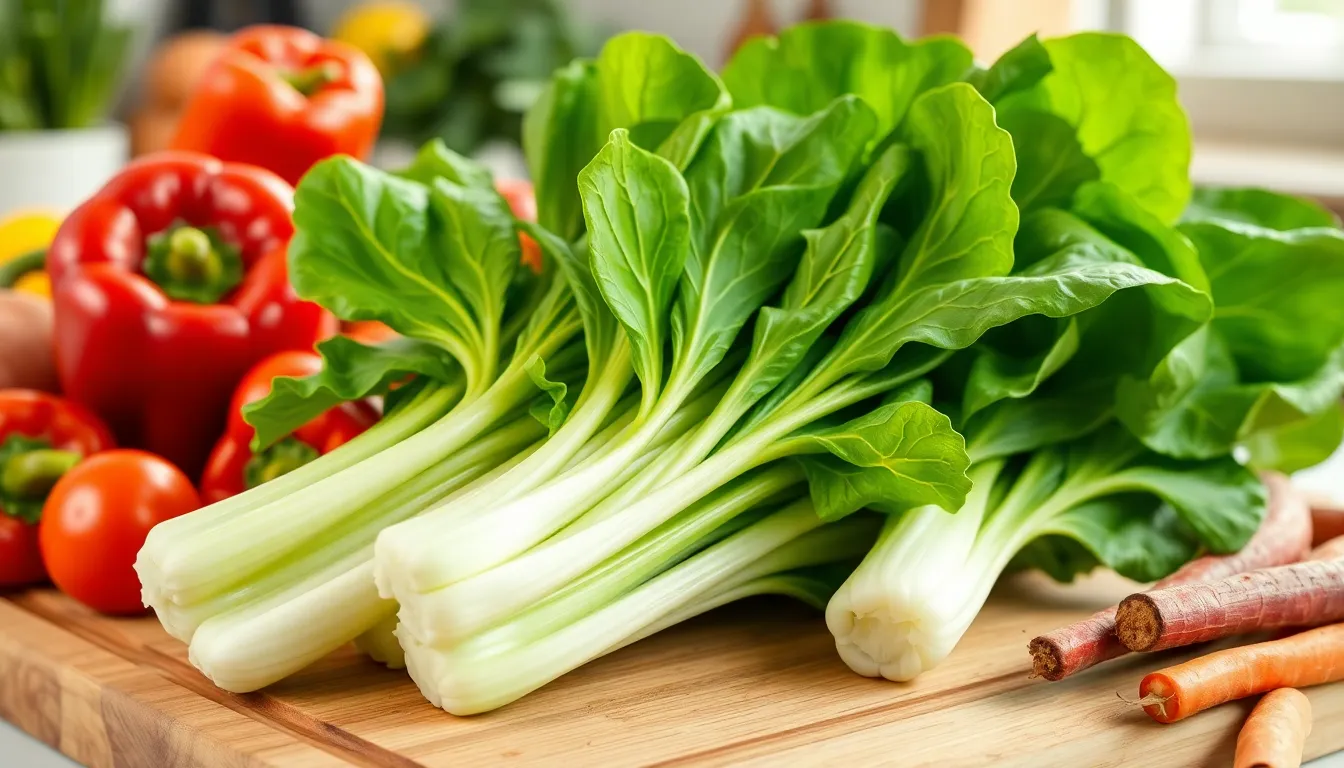
Shanghai bok choy packs an impressive nutritional punch even though its modest calorie content of just 20 calories per cooked cup. This vibrant green vegetable delivers approximately 3g of protein per serving while containing zero fat and only 3g of carbohydrates, making it an excellent choice for those monitoring their caloric intake.
Bone Health Support
Your skeletal system receives tremendous benefits from regular consumption of Shanghai bok choy. Rich in calcium (158 mg per cup), this vegetable provides essential minerals like copper, zinc, and manganese that improve bone mineral density. These nutrients work together to enhance collagen production, protecting both bones and connective tissues. Adding this vegetable to your diet can help prevent osteoporosis and strengthen your overall bone structure.
Immune System Enhancement
Shanghai bok choy boosts your immune defense through its powerful combination of antioxidants and nutrients. The vitamin C content (44 mg per cooked cup) stimulates white blood cell production, improving your body’s natural protection mechanisms. This vegetable displays impressive antibacterial, antiviral, and antifungal properties that shield you from common infections including colds, flu, and respiratory ailments.
Cancer Prevention Properties
As a member of the cruciferous vegetable family, Shanghai bok choy contains cancer-fighting compounds that protect cells from oxidative damage. Its impressive antioxidant profile includes vitamin C, vitamin E, beta-carotene, and selenium – all working to neutralize harmful free radicals. The fiber content supports digestive health while potentially reducing colorectal cancer risk. Research has linked regular consumption of cruciferous vegetables like Shanghai bok choy to lower risks of bladder, gastric, colorectal, and endometrial cancers.
Cardiovascular and Metabolic Benefits
Your heart benefits significantly from Shanghai bok choy’s high potassium content (631 mg per cup), which helps regulate blood pressure and supports cardiac function. The combination of fiber and antioxidants contributes to lower cholesterol levels and reduced diabetes risk. These properties make Shanghai bok choy an excellent addition to heart-healthy eating plans.
| Nutrient | Amount per Cooked Cup | Health Benefit |
|---|---|---|
| Calories | 20 | Low-calorie food choice |
| Protein | 3g | Supports muscle maintenance |
| Fiber | 2g | Promotes digestive health |
| Vitamin C | 44mg | Boosts immune function |
| Calcium | 158mg | Strengthens bones |
| Potassium | 631mg | Regulates blood pressure |
| Iron | 2mg | Supports oxygen transport |
Adding Shanghai bok choy to your stir-fries not only enhances flavor but also incorporates these impressive health benefits into your meals. The quick cooking methods typically used for this vegetable help preserve its nutritional integrity while delivering its characteristic tender-crisp texture.
Final Thoughts On This Shanghai Classic
Shanghai bok choy stands as a testament to how simplicity often delivers the most satisfying results. This versatile vegetable brings restaurant-quality Chinese cuisine into your kitchen with minimal effort yet maximum flavor.
Whether you’re stir-frying it with garlic and ginger or incorporating it into heartier dishes with proteins you’ll appreciate its tender-crisp texture and ability to absorb savory sauces while maintaining its natural sweetness.
Beyond its culinary appeal Shanghai bok choy offers impressive nutritional benefits from immune support to heart health making it a smart addition to your meal rotation.
Next time you’re looking for a quick nutritious side that doesn’t compromise on taste reach for Shanghai bok choy and discover why this humble vegetable has earned its place as a beloved staple in kitchens worldwide.
Frequently Asked Questions
What is Shanghai bok choy and how is it different from regular bok choy?
Shanghai bok choy is a smaller, more tender variety of Chinese cabbage with smooth rounded leaves and pale green stems arranged in a compact rosette shape. Unlike regular bok choy, it has a more delicate texture, milder flavor with subtle peppery notes, and is generally more tender. The entire vegetable is edible, making it perfect for quick-cooking methods like stir-frying.
How do I select and store fresh Shanghai bok choy?
Look for bright green leaves and firm stems when selecting Shanghai bok choy. Store unwashed bok choy wrapped in a damp tea towel in the refrigerator, avoiding airtight containers to prevent moisture buildup. Don’t wash until ready to use to prevent spoilage. If it begins to soften, soak in ice water to restore crispness. Properly stored, it can last up to 5 days.
What are the health benefits of eating Shanghai bok choy?
Shanghai bok choy is a nutritional powerhouse despite being low in calories. It’s rich in vitamins A and C, calcium, and fiber. The vegetable supports bone health, enhances immune function, and contains cancer-fighting antioxidants. It also offers cardiovascular benefits by helping regulate blood pressure and lower cholesterol levels, making it an excellent addition to a balanced diet.
What ingredients do I need for a basic Shanghai vegetable stir-fry?
You’ll need 1 pound of Shanghai bok choy, minced garlic, neutral cooking oil, soy sauce, oyster sauce, Shaoxing rice wine, toasted sesame oil, sugar, white pepper, and salt. Optional additions include dried shiitake mushrooms, chicken or vegetable stock, and cornstarch for thickening. Having everything prepped before cooking is essential as the dish comes together quickly.
How long does it take to cook Shanghai vegetables?
Shanghai vegetables cook extremely quickly, making them perfect for weeknight meals. The actual cooking process takes only about 3-5 minutes for stir-frying or 5-7 minutes for steaming. Including preparation time for washing and trimming, the entire dish can be completed in approximately 10-15 minutes, delivering restaurant-quality results with minimal effort.
Can I add protein to Shanghai vegetable dishes?
Absolutely! Shanghai vegetable dishes are versatile and pair wonderfully with proteins. Popular additions include ground pork, thinly sliced beef, chicken, shrimp, or tofu for vegetarian options. Simply cook the protein first until nearly done, then add the vegetables and sauce. This transforms the side dish into a satisfying one-pot meal while maintaining the fresh flavors.
What are some serving suggestions for Shanghai bok choy?
Shanghai bok choy pairs excellently with fried rice, noodle dishes, or plain steamed rice. Serve it alongside shiitake mushrooms for an umami-rich experience or incorporate it into one-dish meals with protein. For special occasions, arrange it in a circular pattern on a platter with sauce drizzled on top. Leftovers can be repurposed in spring rolls, dumplings, or soups.
Are there different cooking methods for Shanghai bok choy?
Yes, the two most popular methods are stir-frying and steaming. Stir-frying involves quickly cooking the vegetables in a hot wok with oil, garlic, and seasonings for a tender-crisp texture. Steaming preserves the natural sweetness and creates a more delicate result, typically finished with a simple drizzled sauce. Both methods maintain nutritional benefits while highlighting the vegetable’s unique qualities.
What makes Shanghai bok choy appealing to picky eaters?
Shanghai bok choy’s mild sweetness and delicate texture make it more approachable than many other vegetables. When properly prepared with a balanced sauce of Shaoxing wine, oyster sauce, soy sauce, and sesame oil, it develops a complex flavor profile that enhances its natural qualities without overwhelming them. The satisfying crunch and ability to absorb flavors often win over even reluctant vegetable eaters.
What variations of Shanghai vegetable dishes exist?
Beyond classic bok choy preparation, variations include medley stir-fries with colorful vegetables like carrots, snow peas, and celery; Lumpiang Shanghai (Filipino spring rolls with finely chopped vegetables); spicy versions with hot peppers or spicy bean paste; and protein-enhanced options. Each variation maintains the fresh, light characteristics of Shanghai cuisine while offering different flavor profiles and textures.
